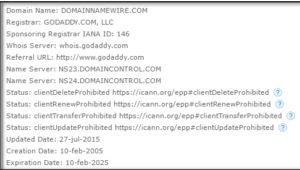Current plan is to introduce it for new domains by May 2018.

.Com and .net currently use what’s called a “Thin whois”. In thin whois, the registrar (e.g. GoDaddy) manages the customer information portion of whois and the registry (e.g. Verisign) manages the technical information, such as nameservers, statuses and creation date.
With thick whois the registry manages all of the whois data.
ICANN’s plan is to require all new domain registrations in .com and .net to be submitted as thick starting in May 2018, and existing whois data to be migrated by February 2019.
There are some practical benefits to a thick whois system. For example, right now I have to work with different registrars to pull whois records for some of my articles because the registrars impose rate limits. I’m not talking about huge amounts of records here, either.
On the other side of the coin, these rate limits are in place to prevent spammers from downloading registrants’ contact info. It might be easier for fraudsters and spammers to get your data once thick whois is implemented.
Another downside is that Verisign’s (NYSE: VRSN) contract with ICANN to run .com allows it to ask for a wholesale price increase if it has to implement a new consensus policy, which is what thick whois is. Given the timing of the implementation, this pricing conversation could be part of Verisign’s negotiations with the Department of Commerce for renewing its Cooperative Agreement in 2018. The Cooperative Agreement dictates the .com pricing that is in Verisign’s contract with .com. I’m sure Verisign will argue that migrating to thick whois is an expensive undertaking.






Leave a Comment